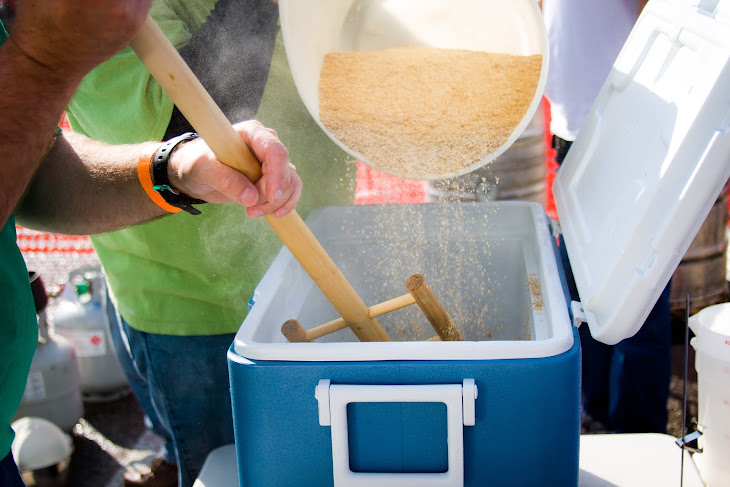by Jon Hill - The craft beer revolution of recent decades was built on ales. From stouts and porters to IPAs, to whites, blondes and reds, and even Belgian dubbels, tripels and quads, most craft beer styles hail from this larger and more ancient branch of the beer family tree.
Lagers, by contrast, have long been the territory of the big corporate breweries in St. Louis, Milwaukee, and Golden, Colorado. With a reputation for being pale, fizzy and bland, the overwhelmingly popular American adjunct lager represents for many craft beer devotees the antithesis of craft brewing, not worthy of emulation.
But this is the year of the lager, at least according to some beer bloggers. Just like last year. And the year before that. It seems that craft lagers are perpetually on the verge of going mainstream, drawing the macro-drinking masses into the fold.
There are some obvious obstacles that may explain this delay. Lagers are temperature-sensitive and technically difficult to produce, achieving widespread commercialization only after the introduction of refrigeration in the late 19th century. The modern industrial brewery is a model of precision and efficiency, if not inspiration, achieving economies of scale unattainable in a microbrewery. But lagers also face the ingrained consumer preferences of the beer snob, Joe Six-pack, and everybody in between. Most American lager fans expect a level of “drinkability” that may never be met by microbrewers. Meanwhile, the appetite for a pale adjunct lager in a craft beer scene obsessed with triple hopped IPAs and funky sours is not guaranteed. The American craft lager remains a style in search of an audience.
Some brewers have made classic lagers over the years: Oskar Blues, Victory, Lagunitas, and Sixpoint to name only a few. Others, like Jack’s Abby in Framingham, Massachusetts, have dedicated their entire production to high-quality craft lagers. But these are the exceptions that prove the rule. Most craft lagers remain decidedly “crafty” in preparation and presentation, featuring high hop bitterness, niche packaging, and narrow distribution not intended for mass markets. Rarely, if ever, have craft lagers taken on the macros on their own turf.
Sunday, April 15, 2018
Is The Craft Beer Buzz Wearing Off?
by Rachel Seigel Has craft beer peaked? In one sign that the industry has grown less frothy, more craft breweries closed in 2017 than any time in the past decade.
And while the craft beer makers saw more growth in production than the overall market last year, their pace is slowing.
A new report by the Brewers Association — a trade association representing small and independent American craft brewers — showed that craft brewers saw a 5 percent rise in production volume in 2017. Yet with that growth comes an increasingly crowded playing field, leading to more closures of small craft breweries. In 2017, there were nearly 1,000 new brewery openings nationwide and 165 closures — a closing rate of 2.6 percent. That’s a 42 percent jump from 2016, when 116 craft breweries closed.
Experts say saturation is still some time away, and that pullback is inevitable for any booming industry that, with time, begins to mature.
“We have seen a little bit of deceleration,” said Bart Watson, chief economist of the Brewers Association. “When you’re talking about an industry that sells tens of billions of dollars a year, it’s hard to grow at double-digit rates.”
Growth in the craft brewing industry began in the late 1970s and early 1980s, Watson said, and has seen a resurgence in the past decade. With consumers who tend to skew male, younger, whiter and with higher incomes, the industry gained its foothold among adults willing to pay more for beer that tasted better than the mass-produced products that had long dominated the market.
Small craft breweries compete among themselves for taps at restaurants and shelf space at retailers. Yet they are also up against massive industrial brewers that wield heavy influence over the national distribution of beer, and often buy up smaller companies. In 2011, for example, Anheuser-Busch InBev bought the craft brewer Goose Island for almost $39 million, the first in a slew of similar acquisitions.
more here... craft-beer-buzz-is-wearing-off
And while the craft beer makers saw more growth in production than the overall market last year, their pace is slowing.
A new report by the Brewers Association — a trade association representing small and independent American craft brewers — showed that craft brewers saw a 5 percent rise in production volume in 2017. Yet with that growth comes an increasingly crowded playing field, leading to more closures of small craft breweries. In 2017, there were nearly 1,000 new brewery openings nationwide and 165 closures — a closing rate of 2.6 percent. That’s a 42 percent jump from 2016, when 116 craft breweries closed.
Experts say saturation is still some time away, and that pullback is inevitable for any booming industry that, with time, begins to mature.
“We have seen a little bit of deceleration,” said Bart Watson, chief economist of the Brewers Association. “When you’re talking about an industry that sells tens of billions of dollars a year, it’s hard to grow at double-digit rates.”
Growth in the craft brewing industry began in the late 1970s and early 1980s, Watson said, and has seen a resurgence in the past decade. With consumers who tend to skew male, younger, whiter and with higher incomes, the industry gained its foothold among adults willing to pay more for beer that tasted better than the mass-produced products that had long dominated the market.
Small craft breweries compete among themselves for taps at restaurants and shelf space at retailers. Yet they are also up against massive industrial brewers that wield heavy influence over the national distribution of beer, and often buy up smaller companies. In 2011, for example, Anheuser-Busch InBev bought the craft brewer Goose Island for almost $39 million, the first in a slew of similar acquisitions.
more here... craft-beer-buzz-is-wearing-off
Subscribe to:
Posts (Atom)


